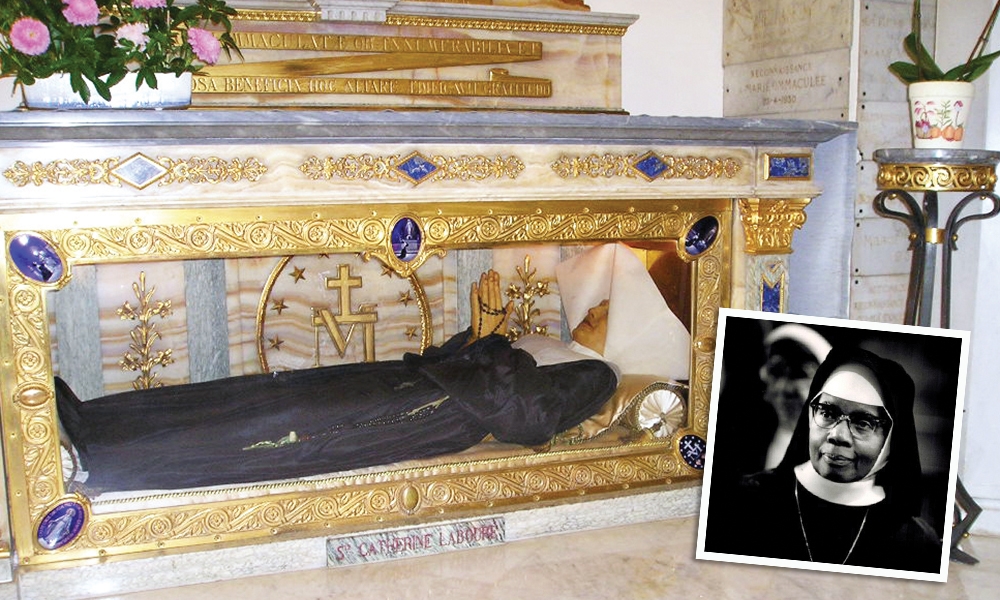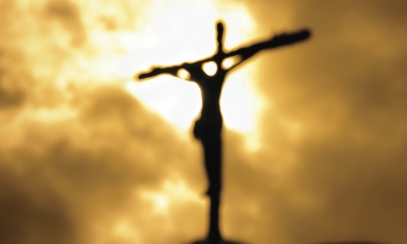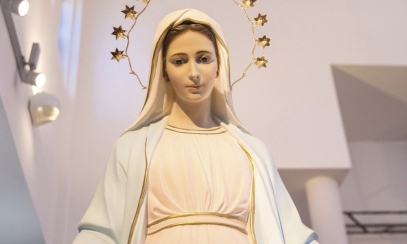
The Incorruptibles…and the curious case of Sister Wilhelmina
Whenever my nephew plays the game “Two Truths and a Lie,” he likes to state that he was once an altar server in St. Peter’s Basilica. I imagine that most of his friends choose that claim as “the lie” among his three statements, but it is actually accurate. In 2007, when my family came to visit me during my studies in Rome, a kind monsignor agreed to celebrate the Eucharistic liturgy for us on the altar above the tomb of Pope St. John XXIII. And my nephew did indeed serve at this Mass.
Whenever my nephew plays the game “Two Truths and a Lie,” he likes to state that he was once an altar server in St. Peter’s Basilica. I imagine that most of his friends choose that claim as “the lie” among his three statements, but it is actually accurate. In 2007, when my family came to visit me during my studies in Rome, a kind monsignor agreed to celebrate the Eucharistic liturgy for us on the altar above the tomb of Pope St. John XXIII. And my nephew did indeed serve at this Mass.
That remains a precious memory for him, but what I remember most is how remarkable the late pope looked behind the glass casing. St. John XXIII, famous for initiating the Second Vatican Council, appeared to have died just a few days prior to our Mass – not way back on June 3, 1963. The Church has wisely refrained from declaring that anything supernatural has occurred, however…especially since there was a light preservation procedure done to his body before it was laid in state at St. Peter’s. The Church moves very slowly and carefully in these cases.
A similar phenomenon occurred this year in Missouri on April 28 when the Benedictine Sisters of Mary, Queen of the Apostles, exhumed the body of their foundress, Sister Wilhelmina Lancaster, OSB. Four years after her body was buried in a simple wooden coffin, it appeared incredibly well preserved. Sister Wilhelmina’s body had not been embalmed.
This discovery garnered significant attention in the global media, and large crowds started coming to visit her mortal remains at the Monastery of St. Joseph in Gower, Missouri. The local ordinary, Bishop James V. Johnston Jr., issued a statement on May 26 recognizing that “the condition of the remains of Sister Wilhelmina Lancaster has understandably generated widespread interest and raised important questions.” He also noted:
“The Church has an established process for determining if someone is a saint and worthy of veneration. No such process has yet been initiated on behalf of Sister Wilhelmina. It is understandable that many would be driven by faith and devotion to see the mortal remains of Sister Wilhelmina given the remarkable condition of her body, but visitors should not touch or venerate her body, or treat them as relics.”
There is indeed a class of saints called “the Incorruptibles.” These are holy women and men whose bodies (or parts of their bodies) are remarkably well-preserved, not showing all the normal signs of decay. For example, the bodies of two French saints who experienced mystical visits from their Heavenly Mother are still in excellent condition: St. Catherine Labouré, the religious sister whom Mary asked to promote the miraculous medal in 1830; and St. Bernadette, the peasant girl to whom the Blessed Virgin appeared at Lourdes in 1858.
Such incorruptible saints point to several crucial truths of the Catholic Faith:
- The reality of Christ’s resurrection, which we share in through baptism
- The ultimate destiny of the bodies of those who die in God’s friendship, since at the Last Judgment their bodies will be reunited with their souls and glorified (see sidebar)
- And the Good News that divine love is stronger than death. Indeed, the incorrupt bodies of certain saints highlight the reality that Christ has conquered not only sin, but death as well.
Holy people tend to be the most unique individuals on the planet. And they often like to shake things up. Of course, we cannot know if the Church will eventually declare Sister Wilhelmina a saint, a blessed or even a servant of God (the latter two titles are steps towards being canonized a saint). But some aspects of her life – and the monastery she founded – certainly make her stand out as a 21st-century religious sister.
First, Sister Wilhelmina shows the importance of keeping a sense of humor while not being a people-pleaser. According to her biography, she ruffled some feathers in her original community by wanting to wear the order’s habit. Another sister once passed her in the hallway and pointed to her traditional head covering, asking: “Are you going to wear that all the time?” “Yes!” Sister Wilhelmina responded. And she later remarked: “I am Sister WIL-HEL-MINA — I’ve a HELL of a WILL and I MEAN it!”
Sister Wilhelmina also stands out because she was a Black Catholic foundress of a religious community. That is extremely rare in our country’s history. As she lived through segregation, was called names because of her skin color and was the only Catholic among many Baptists and Methodists growing up, we can pray that God will use the curious case of Sister Wilhelmina to help heal racial divisions in our country.
She was also a member of another minority group. Sister Wilhelmina had a deep love for the pre-Vatican II Latin Mass and obtained ecclesiastical approval to have this liturgy celebrated at her monastery. Recently, Pope Francis has put in place some new restrictions on the celebration of the Traditional Latin Mass, and there are passionate discussions in the Church on both sides of this issue. Perhaps the Lord can use her to help heal liturgical tensions in our Church, as well.
Finally, as someone who entered religious life after being drawn to the beauty of the Lord, Sister Wilhelmina points to the importance of beauty in human life. Recent popes have emphasized that the most promising way to share the Good News in the current culture is by following “the way of beauty” – and the monastery that Sister Wilhelmina founded is a wonderful example of this approach to evangelization. The Benedictine Sisters of Mary, Queen of the Apostles, have become famous for producing chart-topping recordings of Gregorian chant and other Catholic hymns.
May we follow the example of Sister Wilhelmina and take time to seek beauty in our lives, whether it be in music, art, literature, nature or the liturgy. Beauty, after all, reflects God himself… the One whom St. Augustine calls “Beauty ever ancient, ever new.”
What is a glorified body?
In death, the separation of the soul from the body, the human body decays and the soul goes to meet God, while awaiting its reunion with its glorified body. God, in his almighty power, will definitively grant incorruptible life to our bodies by reuniting them with our souls, through the power of Jesus' Resurrection. - Catechism of the Catholic Church, no. 997
Based on the accounts of Jesus after his resurrection, the Church discerns four special characteristics of the glorified, resurrected body. (The definitions below are taken or adapted from the Modern Catholic Dictionary.)
Impassibility
Free from every kind of physical evil, such as sorrow or sickness, injury or death.
Subtility
Not bound by space, time or physical limitations. The prototype is Jesus’ glorified body, which passed through closed doors.
Agility
The body is totally submissive to the spiritual soul, in movement through space, with the speed of thought.
Clarity
Totally free from every deformity and filled with resplendent radiance and beauty.
The resurrected bodies of the saints will reflect the radiant light of Christ. As Jesus said, “Then the righteous will shine like the sun in the kingdom of their Father.” (Matt. 13:43)
Dr. Dan Osborn is the Diocesan Theologian and Coordinator of Permanent Diaconate Formation & Ministry for the Diocese of Saginaw.



